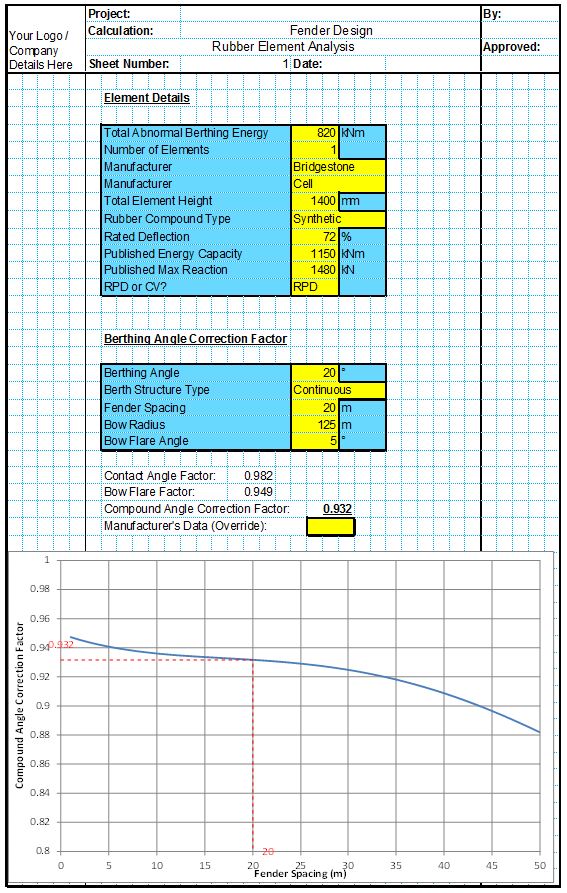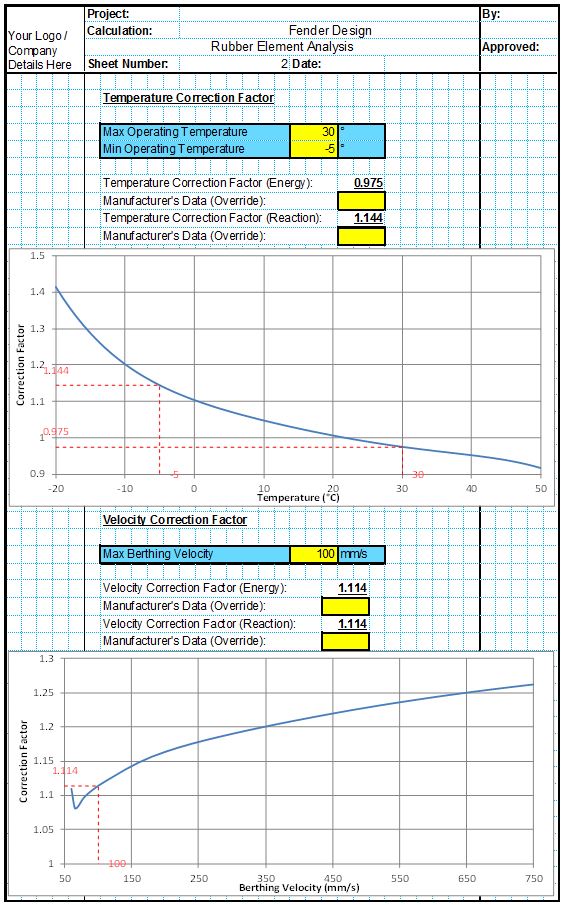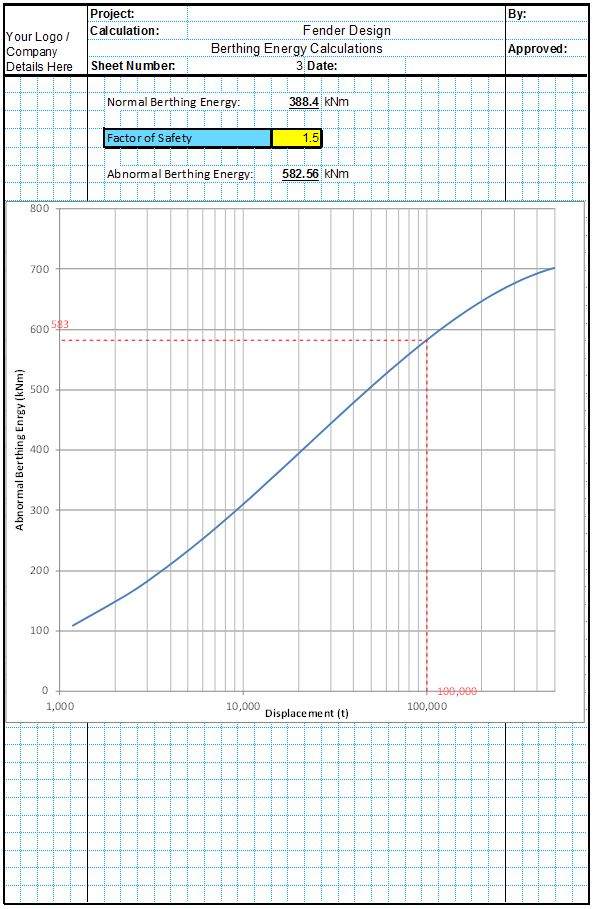This suite of spreadsheets allow the user to design the rubber fender elements. It allows the user to determine the energy capacity and reaction force of a rubber fender element, to analyse the performance of the rubber elements and to analyse the effects of adjacent fenders on the overall energy capacity of the fendering system.
The Fender Element Design spreadsheet uses typical manufacturer's data to determine the effective energy capacity and reaction force for any rubber fender element. The user specifies details of the fender element to be analysed, and then provides further environmental details and berthing conditions which the spreadsheet uses to estimate the berthing angle correction factor, temperature correction factor and velocity correction factor. This is then combined with the manufacturer's tolerances to give a detailed estimate of the rubber elements design minimum energy capacity and maximum reaction force.
The Fender Element Performance spreadsheet analyses the user specified rubber fender element performance. The user specifies an element type and the spreadsheet returns values for energy capacity and reaction force for any level of deflection.
Finally the multiple fender contact analysis spreadsheet takes user input vessel and fendering details and analyses the effects of adjacent fenders on the total berthing capacity of the fendering system. The spreadsheet completes a detailed fender performance analysis on the adjacent fenders to calculate their utilisation and contribution to the overall energy capacity of the fendering system. This usually allows the designer to optimise the design of individual fenders on a continuous quay to allow for the contribution of adjacent fenders. Our unique design graph allows the designer to easily see the effects of different fender spacings on the overall energy capacity of the fendering system. This can be used at the early stages of design to optimise the fender spacing.







